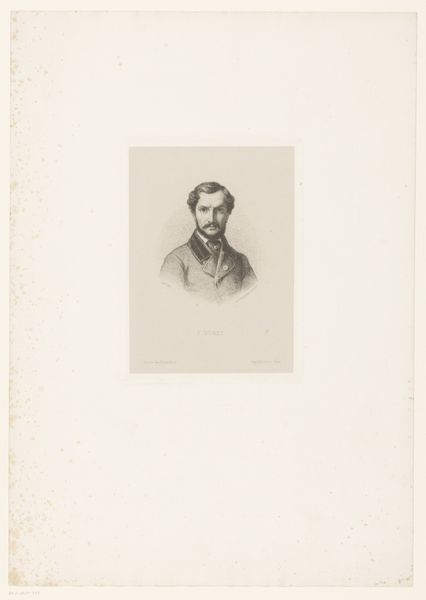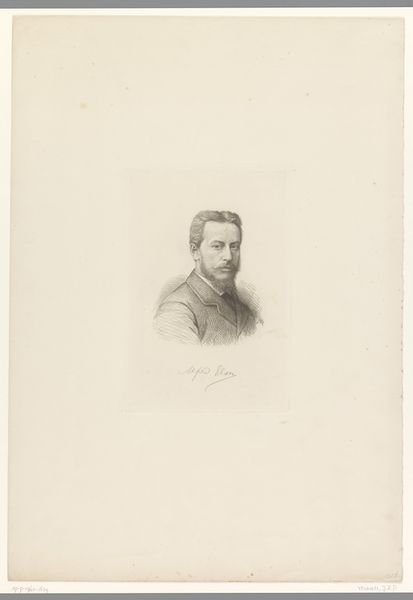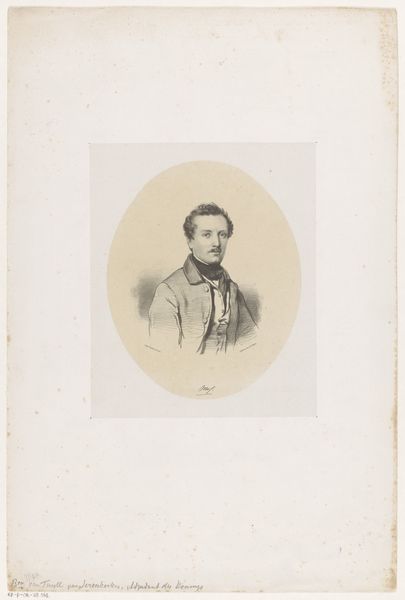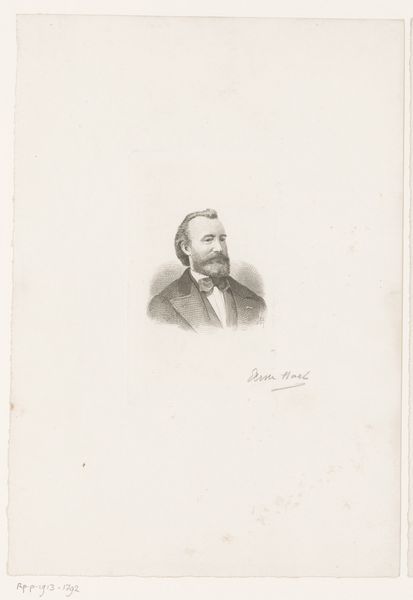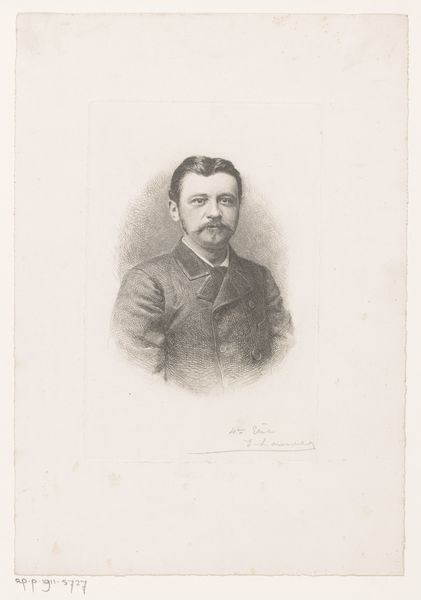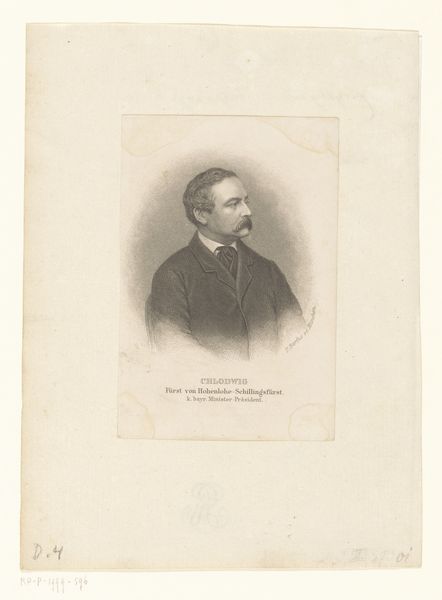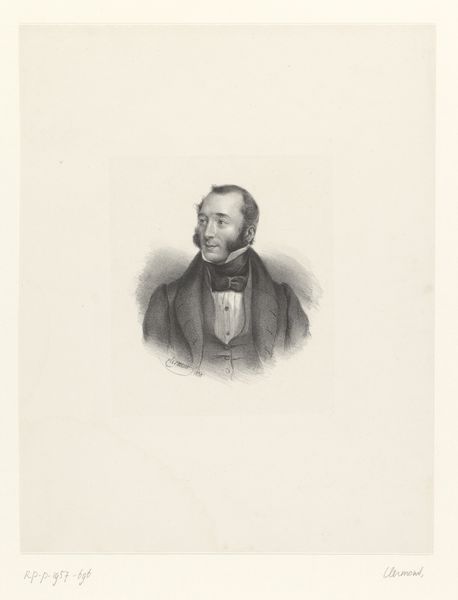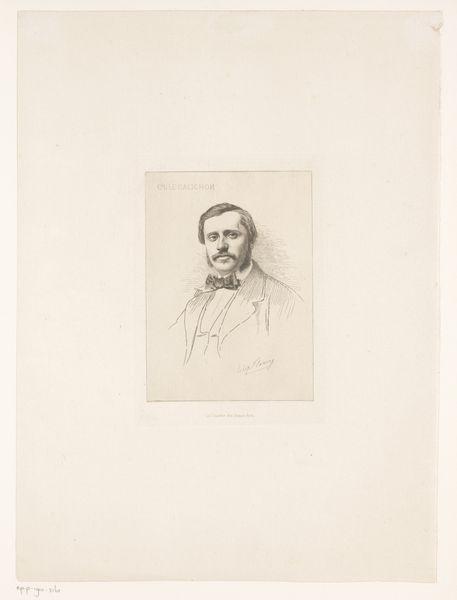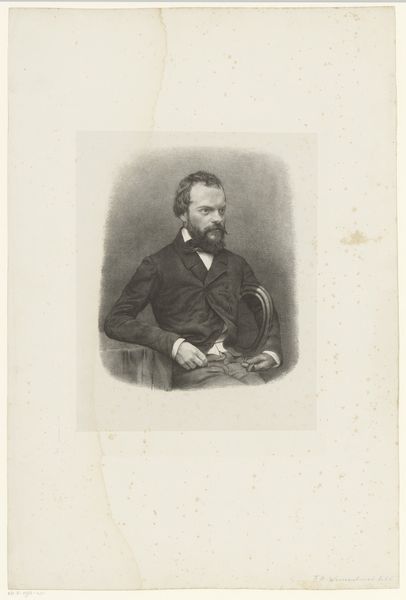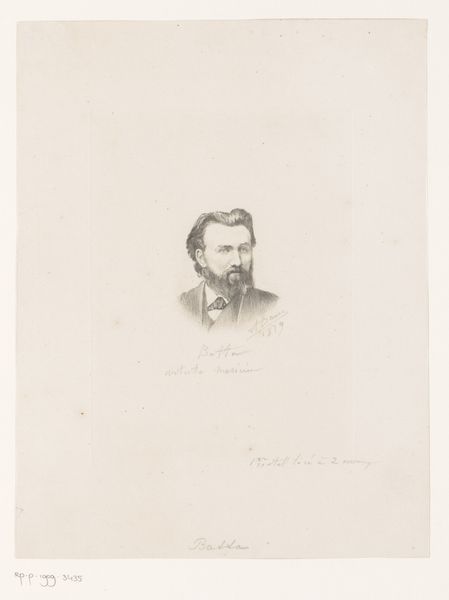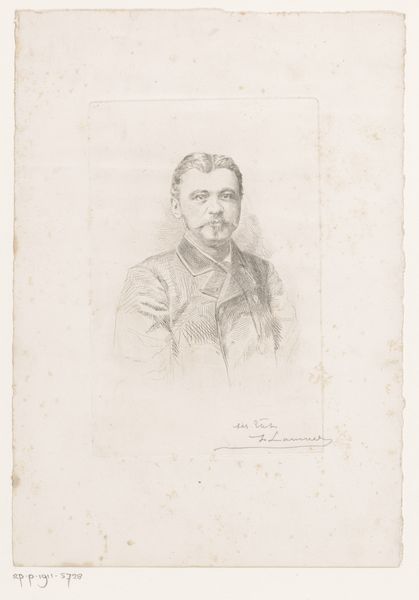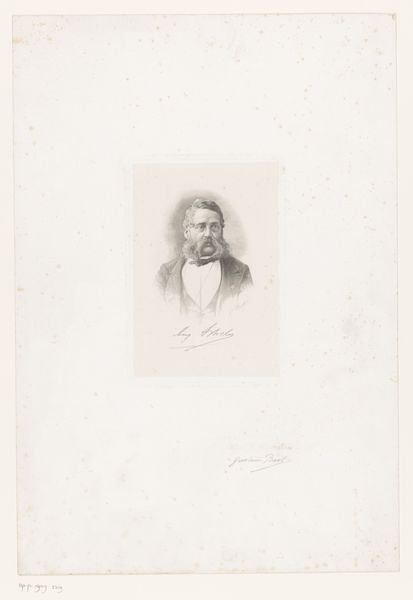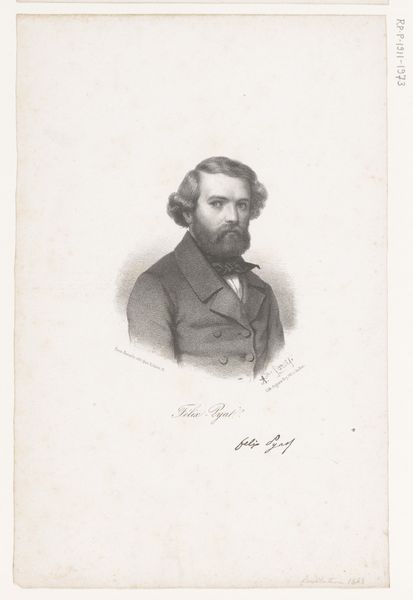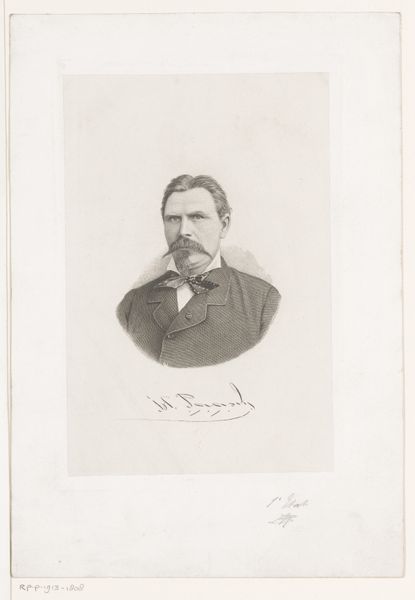
print, engraving
#
portrait
# print
#
old engraving style
#
engraving
#
realism
Dimensions: height 155 mm, width 96 mm
Copyright: Rijks Museum: Open Domain
Curator: Here we have a portrait of Frans de Cort, dating roughly between 1831 and 1890, rendered in engraving. Editor: My immediate reaction is one of stark simplicity. It’s monochrome, quite small on the page, and feels…contained. Almost formal in its austerity. Curator: Right. And this containment speaks volumes. Consider the material conditions. This is a print, meaning it was designed for reproduction and dissemination, unlike a unique painted portrait. Its very existence hinges on its accessibility and availability to the masses, positioning De Cort within a network of social exchange and visual representation. Editor: Precisely. And engraving itself is a laborious process. Think of the hours spent meticulously carving lines into a plate, a clear material manifestation of skill, production, and value determined not only by artistry but by intense labor. Who made the work and how are relevant questions to consider in an historic context. Curator: Absolutely, and those lines contribute to the way Frans de Cort is seen and understood in society, a powerful tool. Portraits, especially during this time, acted as not just records of physical likeness but functioned to legitimize and solidify social standing. Editor: The formal attire, the neatly groomed beard... These are carefully constructed markers of status. Look at the material presentation, however. This isn't a large canvas destined for a private salon. Its humbler print-form indicates wider accessibility to this particular representation. Curator: It poses a potent question: access for whom and for what purpose? It is likely this portrait served some kind of broader institutional agenda tied up with emergent class structures, nationalisms and perhaps even served as a collectible commodity during that period. Editor: In that way the print allows many people, albeit elite people, to consume images of men of a certain standing. It's about commodity production as a form of knowledge, but perhaps one restricted to the ruling class? The artist, Michiels, also seems like an interesting node in that network of exchange and production too. Curator: By looking at both the artistic execution, the methods by which this portrait came to be and the greater social implications that can be found in portraiture as a genre during the 18th and 19th centuries, a seemingly simple object can be opened up to reveal profound insights into society, power dynamics and the creation of shared meaning. Editor: Indeed, stripping down our analysis to the artist's choices with materials helps unlock layers of potential social critique inherent within a modest piece. It asks viewers to look beyond mere representation, toward something altogether more socially complicated.
Comments
No comments
Be the first to comment and join the conversation on the ultimate creative platform.
